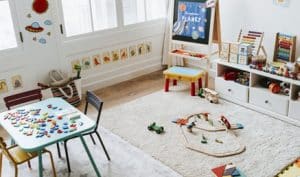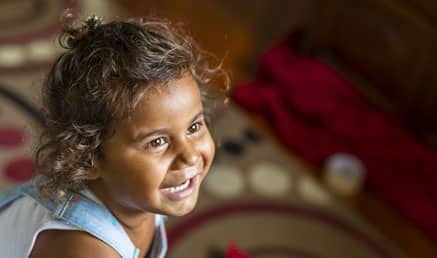
“It’s our polite nudge in the ribs to help you and your team stay organised and on task.”
This week’s subject is Upkeep
Element 3.1.2: Premises, furniture and equipment are safe, clean and well maintained
Does your service have clear, consistent and comprehensive systems in place to monitor and maintain the cleanliness and safety of the premises, furniture and equipment?
Under the Education and Care Services National Law and Regulations, Services must ensure that appropriate systems are in place to ensure that the educational environment and equipment remain in good repair, are safe and minimise potential risks to children and staff. The upkeep of buildings, furniture and equipment directly impact the safety of everyone within your Service environment. Ensure that your policies and procedures that outline practices relating to the physical environment are regularly reviewed and followed by all staff at the Service.
When it comes to the physical environment, it’s imperative that Services adhere to strict procedures for the monitoring and maintenance of the premises, furniture and equipment to minimize risk and hazard and ensure safety. Ensure that information and training is provided to new staff on how to adequately implement procedures.
Furniture and equipment safety:
-
- All furniture, equipment and resources must meet Australian Standards. Services must ensure that educators are trained in the correct assembly and maintenance
- Ensure that all playground equipment is developed, installed, inspected and maintained in line with Australian Standard AS 4685
- All cots must meet Australian Standard AS 2172
- Highchairs must meet Australian Standard AS 4684
- Ensure you keep all documents that confirm furniture and equipment meet Australian Standards
- Ensure you keep all manufacturer’s documents provided with equipment, furniture and resources, including instruction manuals, certificates, information sheets etc.
- Ensure manufacturer’s instructions for equipment that is regularly disassembled and reassembled and stored are made available to educators and staff.
Safety Inspections/checks:
-
- Ensure a daily safety checklist for both indoor and outdoor environments are completed
- OSHC Services should complete inspections prior to each before and after school care session
- Inspections must be completed prior to children accessing the environment/area
- Maintain a roster detailing who is responsible for completing safety checks each day/session
- Maintain a record/register of safety checks having been completed
- Periodically engage an external expert to conduct a safety audit of the service and its grounds to determine if any repairs are required. Service’s must ensure any work/repairs are completed in accordance with Australian Standards.
Risk assessments:
-
- Conduct thorough and frequent risk assessments of indoor and outdoor environments to minimize risk & hazards
- Risk assessments for any equipment and experiences that attract a level of risk. Example: playground equipment, climbing frames, water play, woodwork, gardens and natural areas, sand pit, mud pit, tree climbing etc.
- Risk assessments should be conducted regularly. The frequency may be determined by the geographical location of the service, frequency of incidents or changes to the layout of the environment
Cleaning:
-
- Maintain consistent and thorough cleaning routines of all areas, equipment and resources including sand pits, mud kitchens, toys, dress up clothing/accessories, surfaces, handles etc.
- Have clear and detailed procedures for cleaning routines and regularly review with staff
- Ensure educators adhere to manufacturer’s advice and instructions when using products to clean furniture and equipment at the Service
- Keep a record of all cleaning procedures and ensure they are available to sight, if required by an Authorised Officer
- Accidents and spills must be cleaned up as quickly as possible to ensure that the service always maintains a high level of cleanliness, hygiene and safety
Staff training and information:
-
- Regularly discuss monitoring and scanning of the environment, strategies and actions to minimise risks with the team
- Ensure staff are inducted on adequate cleaning and maintenance routines
- Ensure staff are aware of the location of the register of hazardous chemicals and Safety Data Sheets
- Provide educator and staff induction training on risk management, standalone risk management training, and regular updates and reviews at team meetings. Topics to include:
- identifying hazards (consider developing a checklist to assist with identifying hazards)
- evaluate and manage the risk
- implement risk minimisation plans to control identified risk/s
Resources:
Providing a Child Safe Environment: Policy Guidelines
Assessment and reassessment of residences and venues for Family Day Care
Australian Standards for Playgrounds Factsheet
Within System7 go to Quality Area 3/ Modules 3, 4 & 5 to submit self-assessment notes and if required, open a QIP issue if you identify any areas of improvement.
The Childcare Centre Desktop has a range of resources to assist services with the upkeep of the physical environment. These include Physical Environment Policy, Physical Environment Audit, Equipment and Resource Audit and Guide, Indoor and Outdoor Cleaning and Safety Checklists and much more.
Resources, NQS Element, Regulation and System7 links
Childcare Centre Desktop – Childcare Centre Desktop
National Quality Standard – QA 3/ 3.1.2- Upkeep
National Regulations – Chapter 4, Part 4.3- Physical Environment
System7 Module – QA 3/ Modules 3, 4 & 5
If you have any questions send us a note via the Contact page here!




